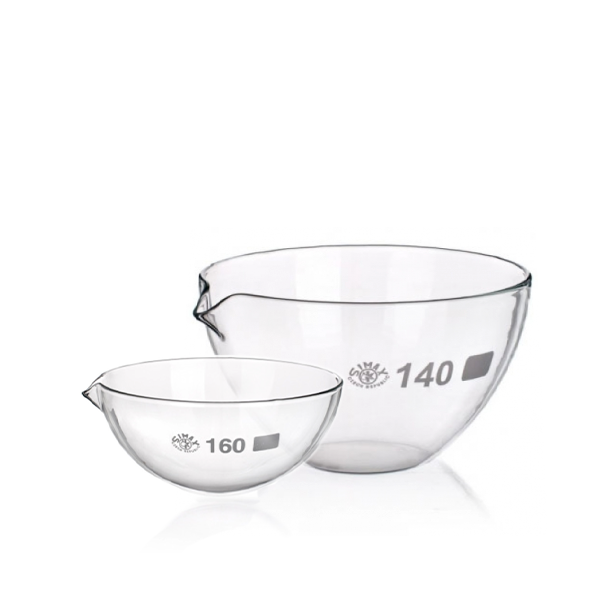Steam trays
- Steam trays with a flat base
- Available with or without a spout
- Made of borosilicate glass 3.3

Steam trays made of borosilicate glass 3.3
- Temperature resistant up to +250 °C
- Resistant to acids, alcohols, and chemicals, except hydrofluoric acid and concentrated alkaline solutions
- Dishwasher-safe

For evaporating excess water or solvents:
- To leave behind dissolved substances
- To obtain a concentrated solution

As the name suggests, evaporation dishes are used to evaporate excess water or solvents, leaving behind dissolved substances or producing a concentrated solution. This process is also known as concentration.
Evaporation dishes are relatively flat and have a large surface area, which promotes the evaporation of liquids. The vapour is removed by a gentle air current. In a flask or beaker, some of the vapour would condense on the walls of the vessel during heating and flow back into the solution. The downside of using a flat dish is that heating must be done carefully, as the liquid could easily splash.
In modern laboratories, rotary evaporators are typically used instead of evaporation dishes because they work faster and allow for the use of a vacuum or reduced pressure. This setup also reduces the likelihood of boiling distortions—a phenomenon in which liquids can be heated above their boiling point without boiling under certain conditions.




